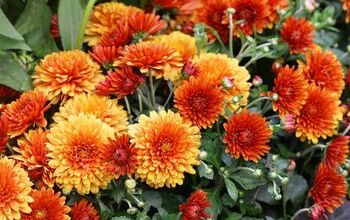How To Protect Tropical Plants From Freezing Temperatures

One of the perks of living in a warm climate is it allows you to grow all sorts of exotic and tropical plants. Depending on your exact location, you might be able to grow citrus trees, stunning tropical blossoms, and even banana trees. But even subtropical and hot climates can experience an occasional and unexpected cold snap that can put these plants at risk of dying. So when there is a frost you need to make sure you take steps to protect your tropical plants from freezing.
When you anticipate an overnight frost, you need to do all you can to prevent tropical plants from freezing. Water the plants and the surrounding soil. Wet soil is less likely to freeze and will prevent the frost from drying the plant. If the plants are potted, move them somewhere warmer like a greenhouse or indoors. If you cannot move the plant, cover it with an insulating plant cover.
The good news is that just because there are unseasonably cold temperatures heading your way, it does not mean your tropical plants are doomed. There are several measures, all simple and straightforward, that you can take to ensure your tropical plants’ survival during a frost.
If there are cold temperatures in your forecast and you have exotic plants that you treasure, read further to learn all the best ways to keep them safe.
Relocate The Plant To A Warmer Location
If you have tropical plants that are small or potted, then the best thing you can do is move them somewhere warmer. This method is by far the most effective, as it eliminates the risk of freezing during an overnight frost.
You might not want to bring outdoor plants into your clean house, which is understandable. Consider setting up space in your garage, or even a protected shed area. These enclosures are usually a few degrees warmer than the outdoors. If you have a portable heater, you can put it on periodically in the evening to boost the temperature in the room by a few degrees. Just remember not to put the heater too close to the plants, as this can put them in shock.
Water The Plant Before A Predicted Frost
It might seem strange to soak your plants right before freezing temperatures, but it is actually one of the best ways to keep tropical plants alive through freezing temperatures. When temperatures reach below freezing, the weather pulls moisture away from plants. This causes the plants to dry out. In fact, much of the damage caused during a frost comes from dehydrating the plant.
Watering the plants not only hydrates them but can also keep them from freezing. Moist soil takes much more energy, and colder temperatures, to freeze. If you have very damp soil all around and only a mild frost, then there is a good chance your plants will not freeze at all.
Use Mulch To Protect The Plant Under The Ground
You not only need to consider the leaves of the plant but also the roots. After all, if the roots of a plant are destroyed, it is very unlikely to survive. Mulch is effective at creating a protective barrier between nature’s elements and the root structures. So consider a form of mulch (and give it a good soak) before an anticipated frost.
Cover The Plants With Insulating Materials
Another popular method for protecting tropical plants from freezing temperatures is to cover them. Covering plants is much like wearing a jacket in the wintertime. While plants do not give off heat the way people do, if you cover plants well, they can maintain the pre-frost warmth, which can save them from damaging frost.
The key is to use the right materials and methods to ensure you cover the plants properly. There are some tips listed below on how to properly cover your tropical plants during freezing temperatures to ensure their survival.
Tips To Cover Plants Effectively
- Use Insulating Materials: Make sure you use a material that has strong insulating properties. This will help preserve warmth and prevent the cold from passing through, thus damaging the plants.
- Make Sure The Cover Reaches The Ground: It is critical you use a material that stretches all the way to the ground. Simply covering the leaves and fruit area will not do much to protect plants, as the cold air can still find its way up into the plant, especially if there is wind.
- Create An Air Pocket: Having a cover large enough to reach the ground also helps create an air pocket. An air pocket will preserve the warm air, like a natural heater of sorts. This will help keep temperatures from reaching below freezing.
- Cover The Plant Before The Temperatures Dip Low: Make sure you cover the plants as soon as possible. Don’t wait until the temperatures are bordering on freezing to cover them. When you blanket the plants when they are warm, they will stay better insulated.
- Don’t Use Plastic To Cover Plants: You might notice some people cover plants with plastic tarps. Don’t do this. Plastic is not a good insulator and is not likely to provide much protection. Use materials with proven insulation.
Decorate The Plants With Heat-Radiating Lights
One creative and fun way to protect your tropical plants through freezing temperatures is to break out your holiday lights. Try decorating your tropical plants with your holiday lights, and then insulate them. Many of these lights give off a little bit of heat. This small amount of heat is enough to keep the plants above freezing temperatures.
Turn On Fans And Increase Air Circulation
Air circulation is also a great way to keep plants from freezing or incurring damage during below-freezing temperatures. If you bring plants indoors or in a shed, remember to make sure you have ample air circulation. Consider bringing in an oscillating fan overnight.
Consider Investing In A Greenhouse
If you love tropical plants like birds of paradise, citrus trees, and exotic orchids, but live in a temperamental climate, consider investing in a greenhouse. A greenhouse might be a fairly substantial initial investment, but it is highly effective at keeping plants alive during cold temperatures. In fact, that is their main purpose and has been for hundreds of years.
Greenhouses can be expensive, but they are also a great DIY project. In fact, a well-made greenhouse can even add some value to your home. It is also a fantastic way to grow all sorts of plants that otherwise perish in non-tropical climates.
Know A Plant’s Limits And Plant Accordingly
Lastly, if you live in a warmer climate that has an occasional cold snap, you should do some research on what to plant. Research and talking with your local plant shops will save you from annual heartbreak over dead plants.
Buy plants that can survive mild frosts, and invest in insulating coverings (or make sure the plants are mobile) for when frost arrives.
Final Thoughts On Protecting Tropical Plants From The Cold
If there are freezing temperatures in the forecast, there are several things you can do to help protect your tropical plants. If they are potted and mobile, you should move your tropical plants indoors, or at least to a protected shed or garage. If the plants are rooted, then make sure you water them well before the frost, as this will keep them hydrated and prevent them from freezing.
Cover your plants with an insulating material. Make sure the material reaches the ground so it can create an insulating bubble. If you have lots of valued tropical plants, consider investing in, or building, a greenhouse.
Related Guides:

Tom Gaffey is an expert writer who currently resides in Washington D.C. Tom has a passion for real estate and home improvement writing, as well as travel and lifestyle writing. He lived the last twelve years in Hawaii where he worked closely with luxury resorts and event planners, mastering his knowledge of aesthetics and luxury products. This is where he found his passion for home improvement and a keen interest in DIY projects. Currently, Tom resides in Washington D.C, and also working on his debut fiction novel.
More by Tom Gaffey















![Cost To Drill A Well [Pricing Per Foot & Cost By State]](https://cdn-fastly.upgradedhome.com/media/2023/07/31/9074980/cost-to-drill-a-well-pricing-per-foot-cost-by-state.jpg?size=350x220)











